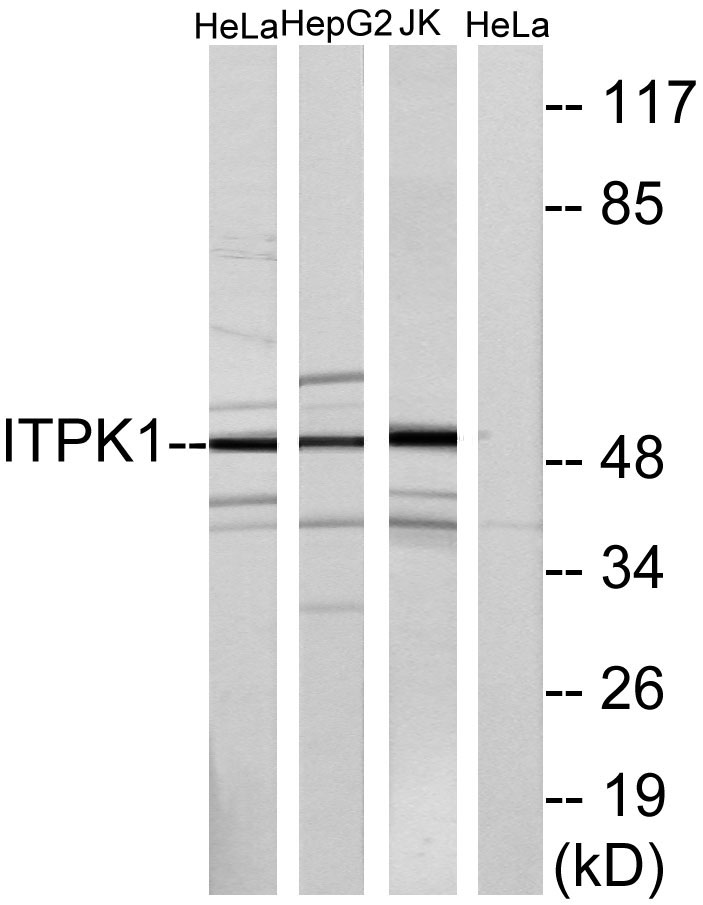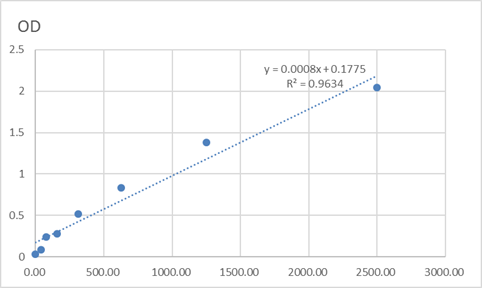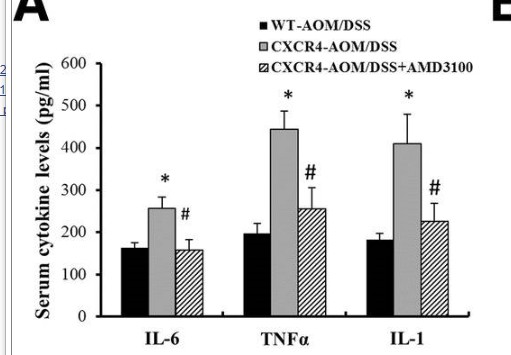Total ITPK1 Cell-Based Colorimetric ELISA Kit
- Catalog No.:KA3720C
- Applications:ELISA
- Reactivity:Human;Mouse
- Gene Name:
- ITPK1
- Human Gene Id:
- 3705
- Human Swiss Prot No:
- Q13572
- Mouse Swiss Prot No:
- Q8BYN3
- Storage Stability:
- 2-8°C/6 months
- Other Name:
- Inositol-tetrakisphosphate 1-kinase (EC 2.7.1.134) (Inositol 1,3,4-trisphosphate 5/6-kinase) (Inositol-triphosphate 5/6-kinase) (Ins(1,3,4)P(3) 5/6-kinase) (EC 2.7.1.159)
- Detection Method:
- Colorimetric
- Background:
- catalytic activity:ATP + 1D-myo-inositol 1,3,4-trisphosphate = ADP + 1D-myo-inositol 1,3,4,5-tetrakisphosphate.,catalytic activity:ATP + 1D-myo-inositol 1,3,4-trisphosphate = ADP + 1D-myo-inositol 1,3,4,6-tetrakisphosphate.,catalytic activity:ATP + 1D-myo-inositol 3,4,5,6-tetrakisphosphate = ADP + 1D-myo-inositol 1,3,4,5,6-pentakisphosphate.,caution:PubMed:11533064 detected some protein kinase activity and ability to phosphorylate transcription factors c-jun/JUN and ATF2. However, PubMed:15762844 showed that it does not have protein kinase activity.,cofactor:Binds 2 magnesium ions per subunit.,function:Kinase that can phosphorylate various inositol polyphosphate such as Ins(3,4,5,6)P4 or Ins(1,3,4)P3. Phosphorylates Ins(3,4,5,6)P4 at position 1 to form Ins(1,3,4,5,6)P5. This reaction is thought to have regulatory importance, since Ins(3,4,5,6)P4 is an inhibitor of plasma membrane Ca(2+)-activated Cl(-) channels, while Ins(1,3,4,5,6)P5 is not. Also phosphorylates Ins(1,3,4)P3 on O-5 and O-6 to form Ins(1,3,4,6)P4, an essential molecule in the hexakisphosphate (InsP6) pathway. Also acts as an inositol polyphosphate phosphatase that dephosphorylate Ins(1,3,4,5)P4 and Ins(1,3,4,6)P4 to Ins(1,3,4)P3, and Ins(1,3,4,5,6)P5 to Ins(3,4,5,6)P4. May also act as an isomerase that interconverts the inositol tetraphosphate isomers Ins(1,3,4,5)P4 and Ins(1,3,4,6)P4 in the presence of ADP and magnesium. Probably acts as the rate-limiting enzyme of the InsP6 pathway. Modifies TNF-alpha-induced apoptosis by interfering with the activation of TNFRSF1A-associated death domain.,similarity:Belongs to the ITPK1 family.,similarity:Contains 1 ATP-grasp domain.,subunit:Monomer. Interacts with CSN1.,tissue specificity:Expressed in brain > heart > skeletal muscle = kidney = pancreas = liver = placenta > lung. In brain, it is expressed in cerebellum, cerebral cortex, medulla, spinal cord, occipital lobe, frontal lobe, temporal lobe and putamen.,
- Function:
- inositol metabolic process, polyol metabolic process, inositol trisphosphate metabolic process, inositol phosphate metabolic process,
- Expression:
- Expressed in brain > heart > skeletal muscle = kidney = pancreas = liver = placenta > lung. In brain, it is expressed in cerebellum, cerebral cortex, medulla, spinal cord, occipital lobe, frontal lobe, temporal lobe and putamen.
- June 19-2018
- WESTERN IMMUNOBLOTTING PROTOCOL
- June 19-2018
- IMMUNOHISTOCHEMISTRY-PARAFFIN PROTOCOL
- June 19-2018
- IMMUNOFLUORESCENCE PROTOCOL
- September 08-2020
- FLOW-CYTOMEYRT-PROTOCOL
- May 20-2022
- Cell-Based ELISA│解您多样本WB检测之困扰
- July 13-2018
- CELL-BASED-ELISA-PROTOCOL-FOR-ACETYL-PROTEIN
- July 13-2018
- CELL-BASED-ELISA-PROTOCOL-FOR-PHOSPHO-PROTEIN
- July 13-2018
- Antibody-FAQs



